Pyongyang is a restaurant chain owned and operated by the North Korean government. The restaurants, all staff from the DPRK’s capital, offer a glimpse inside the world’s most secretive nation. What’s on Weibo went for a North Korean bite in the Beijing branch.
Three waitresses greet us with a short and stern smile when we walk into Beijing’s Pyongyang Restaurant (平壤馆). They all have pretty faces, and their clothes and make-up look impeccable. When we are seated and receive the menu, my friend asks our waitress in Korean: “Where are you from?” “Pyongyang,” she says (we could have guessed), and her smile is gone. She leaves the table before we can ask another question.
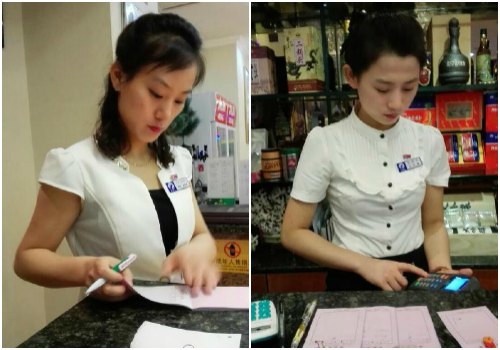
North Korea is one of the most secretive states in the world. The country made international headlines this week when its government announced it had succeeded in testing a hydrogen bomb. Even to China, North Korea’s closest economic and diplomatic ally, the country remains unpredictable, and many Chinese seem to find the Democratic People’s Republic of Korea (DPRK) an intriguing subject; ‘North Korea’ (朝鲜) has become a daily recurring topic on Chinese social media.
Since the 1990s, the North Korean government has opened Pyongyang Restaurants in several countries across Asia. Except for the restaurants in China near to the North Korean border and elsewhere (Beijing, Shanghai, Harbin, etc), there are also branches in Jakarta, Vientiane, Phnom Penh, Kuala Lumpur, and other cities. The branch in Cambodia’s Siem Reap is one of the oldest and biggest in Southeast Asia, and is very popular amongst locals and tourists. In 2012, a Dutch branch was opened in Amsterdam, but it was permanently closed in 2014.
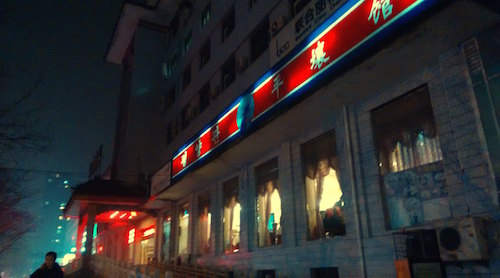
Outside the North Korean Pyongyang Restaurant in Beijing’s Chaoyang District.Pyongyang Restaurants are set up as an extra source of income for the North Korean regime, according to Korean expert Bertil Linter (author of
Great Leader, Dear Leader). Restaurants are easy to set up, and do not require a lot of special expertise, scholar
Simon Duncan writes (2014, 77); they are therefore a relatively uncomplicated way to acquire foreign currency for the leadership. Many foreigners, fascinated with the hermit kingdom, are willing to pay for overpriced food in exchange for a ‘North Korean experience’.
An additional reason why restaurants are an interesting business venture for the DPRK leadership, Duncan writes, is that they offer a chance “to spy on South Korean business people and gain knowledge from them when they are drunk” (2014, 77). This claim is confirmed by the
Korea Joongang Daily, that reports how waitresses eavesdrop on their guests’ conversations to gather information on public opinion. They are ordered to keep the North Korean authorities posted on a daily basis. According to sources, there are surveillance cameras and wiretapping devices installed in some establishments.
In a way, Pyongyang Restaurants are extensions of the North Korean state, and are controlled just as strictly. Much has been written about the mysterious lives of the restaurant’s staff (see Xinhua, BBC, The Atlantic, The Guardian, etc.) Waitresses are carefully selected based on their (privileged) family background, looks and height.
Living in cosmopolitan cities does not bring North Korean waitresses a modern lifestyle; they do not have a phone, nor internet, and live highly regimented lives. They often live above or near the restaurant, and are not allowed to freely roam around the city. They are sent back to their homeland once their period of work abroad is finished. If they escape, their families in North Korea face punishment, DPRK expert Marcus Noland says.
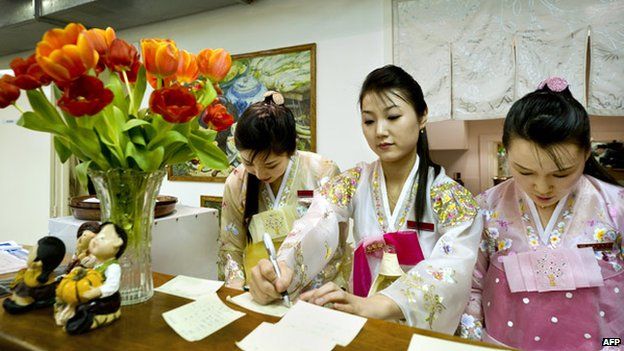
North Korean waitresses in Amsterdam (source: BBC)Beijing’s Pyongyang Restaurant is one of the most well-known and affordable of the city’s several North Korean restaurants. According to the first page on the menu, it was established here over 18 years ago. The restaurant frequently pops up on
Sina Weibo, where netizens share their experiences.
“I drove two friends back to Beijing yesterday. When we got there it was already noon, and we decided to go to Beijing’s famous North Korean Pyongyang Restaurant,” one netizen writes: “The restaurant food is okay, better than most Korean places. The waitresses all come from North Korea, and apart from us, nobody seemed to speak Chinese. Although the waitresses were helpful, there was certainly some distance.”
“From the ink paintings on the wall, via the North Korean songs on their television, to the pretty North Korean waitresses; it all creates such a strange atmosphere”, another Weibo netizen writes.
We experience that same strange atmosphere upon our visit to Pyongyang Restaurant. The dining hall is brightly lit with fancy chandeliers, but the rest of the restaurant’s decor is surprisingly plain and grey. The North Korean landscape paintings on the wall give an extra Pyongyang feel to the restaurant. The television in the corner of the room shows a music programme on Korean Central Television.


According to the outside sign of the Chinese health inspection, this restaurant is a ‘B’ – which means that it is advised to “dine in restaurants of higher sanitation ratings”. Although the restaurant looks fairly clean, its only toilet looks less immaculate.


It is a Sunday night, and only about 6 of the restaurant’s 16 tables are occupied. The restaurant’s guests are mostly South Korean and Chinese.
The menu offers a selection of different dishes, ranging from 20 RMB (3 US$) cold noodles, to 1080 RMB (164 US$) seafood soup. There are several fish dishes priced around 100 RMB (15 US$), or whole chickens of 198 RMB (30 US$). We start off with a cold made-in-DPKR Taedonggang beer, which tastes fresh and hoppy.
The waitresses do speak some Chinese, but with our broken Korean, we succeed in ordering some traditional dishes, such as Kimchi, mixed rice dish Bibimbap, blood sausage (a stew of Sundae), and a tofu soup (Sundubu jjigae).
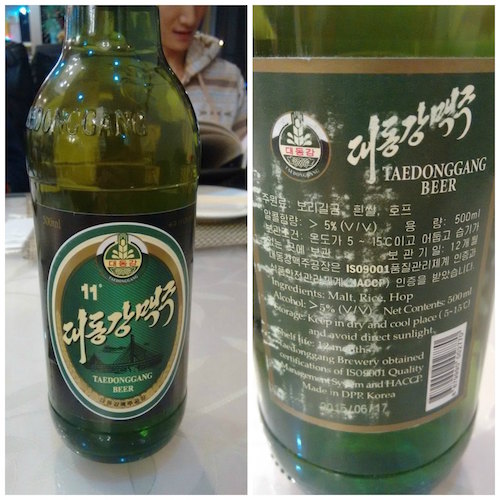
Made in the DPRK: Taedonggang Beer. Different items from the menu.
Different items from the menu. Kimchi dish
Kimchi dish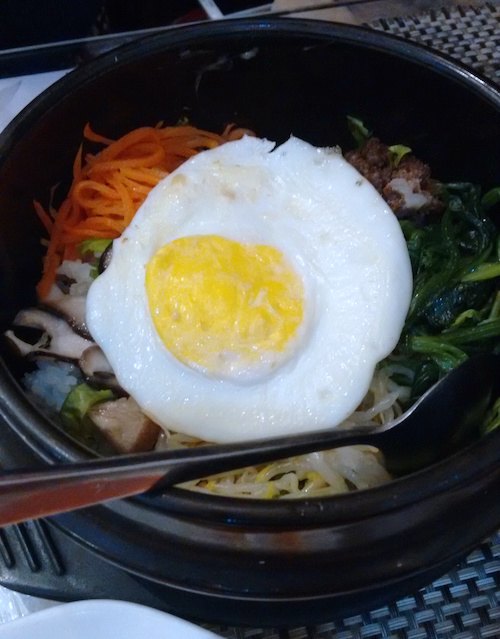 Bibimbap
BibimbapThe dishes are plain and somewhat bland. You don’t need to come to Pyongyang Restaurant for the food – it’s the performances that matter. The waitresses run around after serving the dishes to get changed. At 19.30 sharp, the restaurant’s daily music show begins. The waitresses are multi-talented: they can sing, dance, and play the flute. They perform a surreal combination of upbeat North Korean ‘pop’ songs, opera, brass band, and traditional Chinese songs, dressed in different outfits.
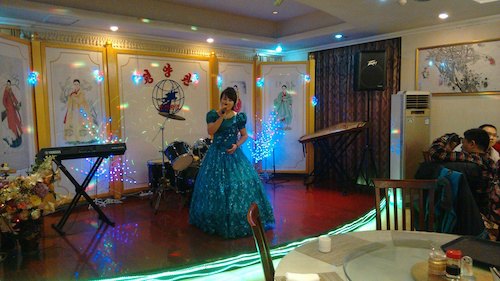
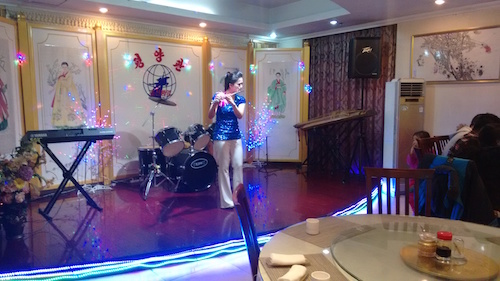
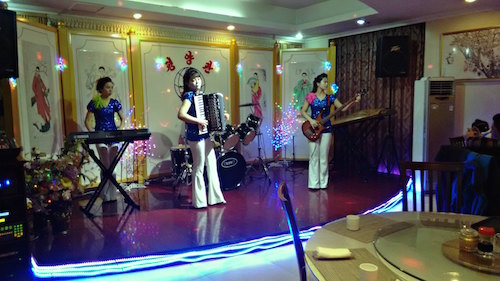

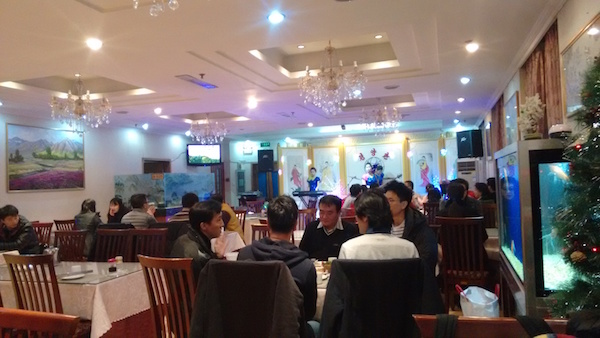
After the performances, the staff’s uniforms and serious faces return, and the waitresses go back to their routine duties – clearing the tables and bringing the bill. The fake rose that they brought to our table during one of their performances is taken back; we are not allowed to keep it.
On Weibo, people seem amazed with the fact that all staff is from North Korea. Other aspects of the restaurant also surprises them: “I went to Pyongyang Restaurant with my friend the other day,” one netizen writes: “And as usual, I turn on my phone to connect to the wifi. To my surprise, I found none. ‘Why is there no wifi?’ I mumbled. ‘Because you’re in Pyongyang,’ my friend said.”
We are happy to step outside into the smoggy streets after dinner. It is interesting to be in Pyongyang for one night, but we prefer to be in Beijing.

– By Manya Koetse
Pyongyang Restaurant
78 Maizidian St, Chaoyang, Beijing
朝阳区麦子店街华康宾馆1层
References
Duncan, Simon. 2014. “North Korean Government-operated restaurants in Southeast Asia.” Second International Conference on Asian Studies, 75-77. Sri Lanka: International Center for Research and Development.
Images: Except for the two images of the waitresses at work (Weibo, BBC) all pictures are the author’s own.
©2016 Whatsonweibo. All rights reserved. Do not reproduce our content without permission – you can contact us at info@whatsonweibo.com.
[showad block=1]
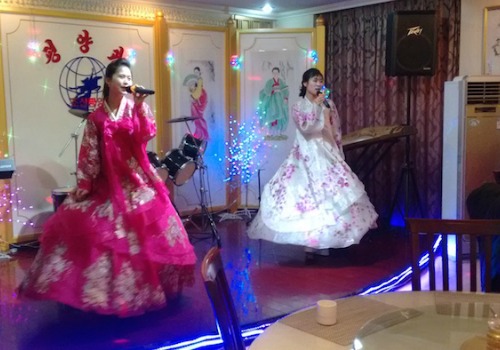

 China Insight1 month ago
China Insight1 month ago
 China Insight3 months ago
China Insight3 months ago
 China Arts & Entertainment3 months ago
China Arts & Entertainment3 months ago
 China Arts & Entertainment2 months ago
China Arts & Entertainment2 months ago




















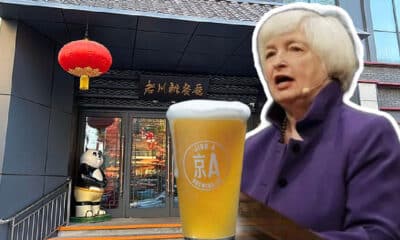






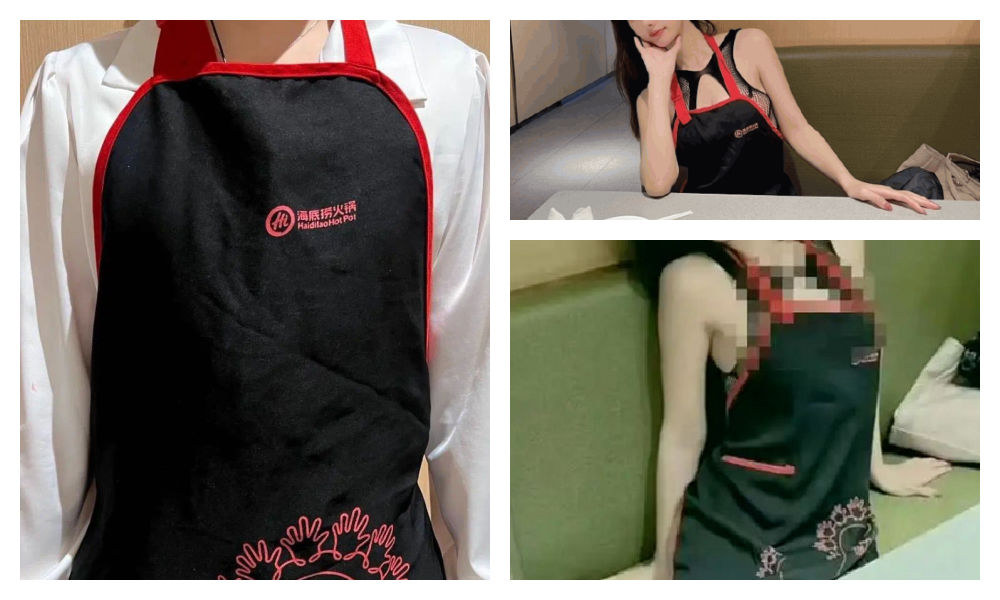


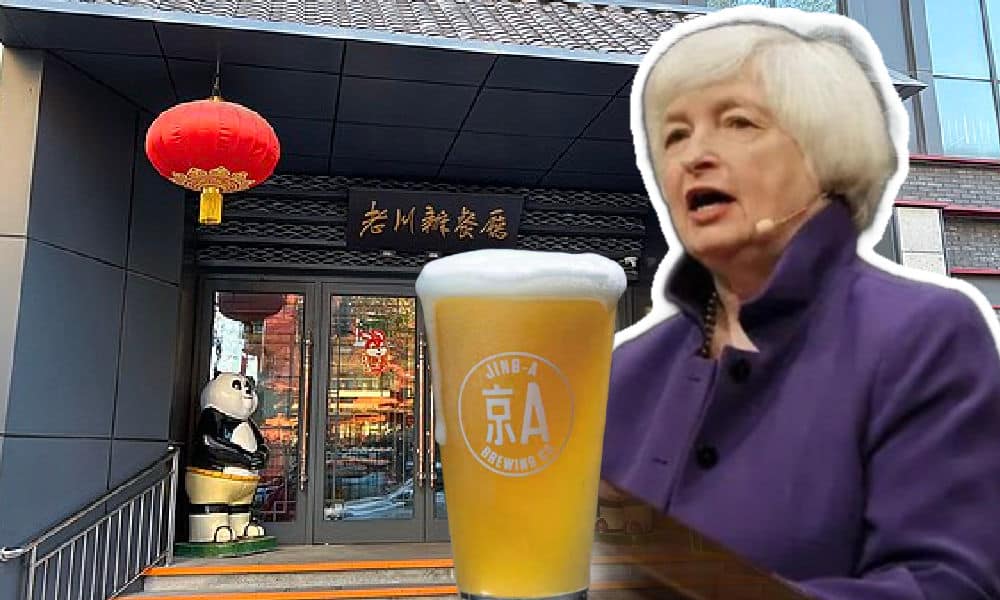
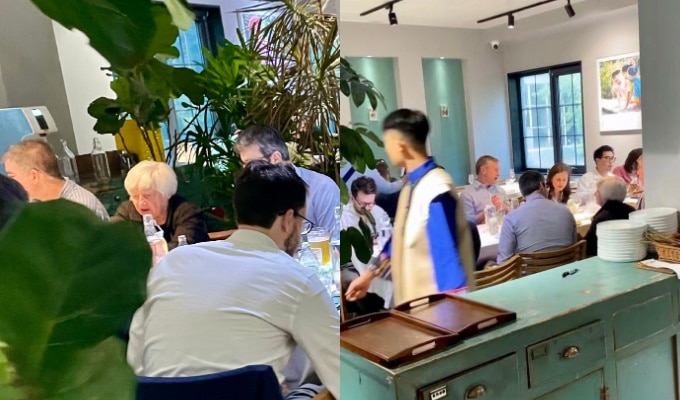
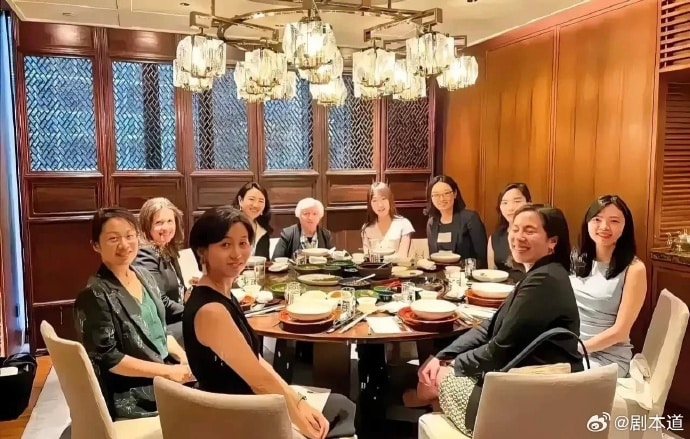
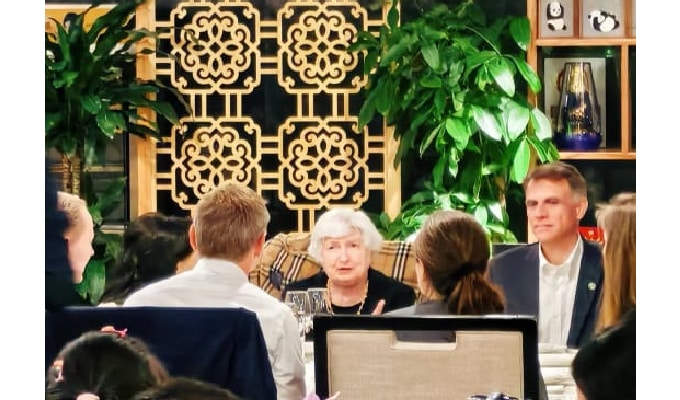
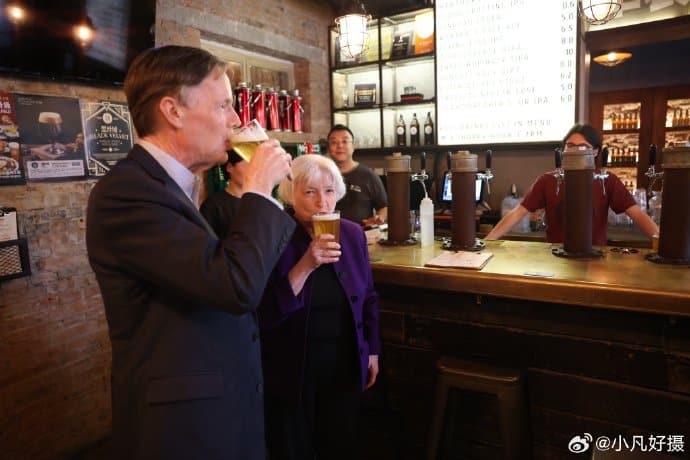










Olivier bourgault
August 8, 2016 at 6:45 pm
Um… your wrong. Please fact check before you write some more bs. There’s no such thing as north korean restaurants in south Korea. Why would north korean government send their citizens their when many defect and seek refuge in this country. Plus what the hell is south Korea thinking if they let pyongyang restaurants do business in their country. Makes no sense. Thirdly if you can’t find a better korean restaurant than that in Beijing you suck.
Manya Koetse
August 8, 2016 at 7:24 pm
Dear Olivier, thank you for your comment. We always fact-check and refer to our sources. You are not right in saying that there are no North Korean restaurants in South Korea (http://smileyjkl.blogspot.nl/2012/11/north-korean-restaurant-in-seoul.html – you might want to fact-check before writing 😉 ). You are, however, right in pointing out that they are probably not the same as that in Beijing and other cities. Thanks for this – we’ve adjusted it. Thirdly, nowhere did we write that there were no better Korean restaurants in Beijing than this particular one. You might want to check out other blogs if you were looking for restaurants recommendations. Regards, Manya (What’s on Weibo editor)
Olivier bourgault
August 9, 2016 at 5:42 am
Oops. I meant no such thing as state owned pyongyang restaurants in south Korea. 🙂 😛